I didn’t take wood shop in high school. I thought it sounded dumb and I was more of a creative kid and tech geek growing up. But I found myself very interested in reclaimed wood projects I’d find on Instagram, Pinterest, or in catalogues from companies like West Elm or CB2. As I’ve aged (like a fine wine) I’ve gotten better at working with my hands. But with age, and time building online businesses, I’ve also become more distracted than ever.
My wife Caroline had been living with me for a few years, and since day one she’d turned our house from “undecorated bachelor pad” to “modern and stylish living space.” Whenever we changed something in the house, I always gravitated towards wood tones and textures. The obsession began…
Building a reclaimed wood wall, loving every minute of it, and learning a few lessons about business along the way.
If you’ve never seen one, a reclaimed wood wall is fairly simple; you take planks of wood and just like you’d install a wood floor, you install them on the wall (with a nail gun, glue, double-sided tape, or a mixture of the three). After weeks of imagining wood on ALL the walls of our house (I even did some terrible photoshop mockups), it was time to bite the wooden bullet.
I knew there were used wood pallets behind a hardware store near our house. I went to the store and asked someone working there if people (me) could take the used pallets that were piled up in the back. He said that they had a specific pile that was broken or not useable and I was free to take as many of those as I wanted. I went to the back of the store and piled my first few pallets into the bed of my red 1948 Chevy pick-up truck (aptly named CLIFFRD, after the Big Red Dog cartoon character, obviously).
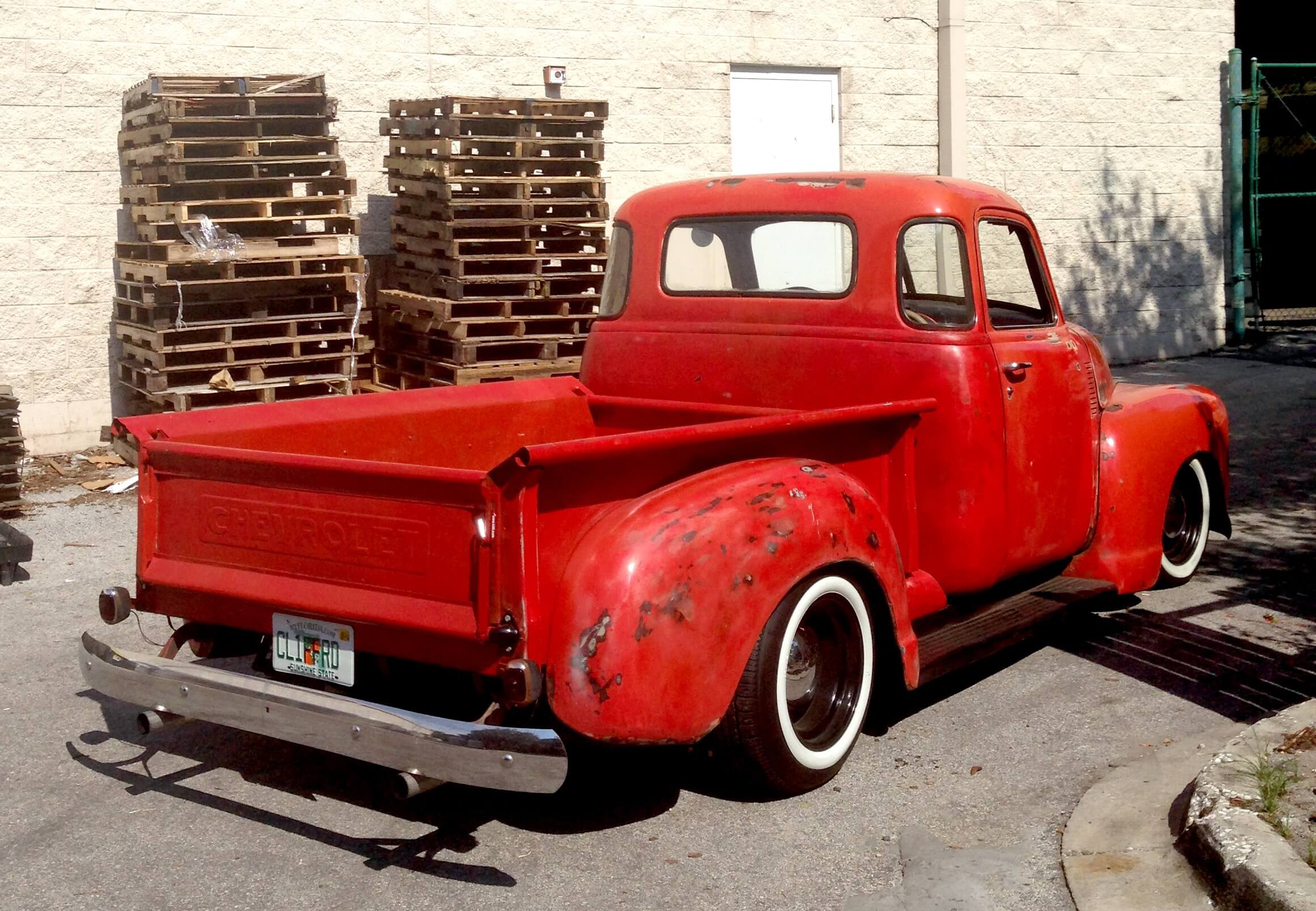
(Yay for taking photos for memories!)
I had no idea how many pallets I’d need, so I just piled in as many as I could fit in the truck. When I got home I started the hardest part of any reclaimed wood project; getting the wood from whatever state it was in (in this case nailed-together pallets) into useable planks.
It was a good thing I grabbed a bunch of pallets, because taking apart pallets is like peeling a hard-boiled egg (it never goes as smoothly as you hope!)
Not only did I break a hammer in half, I also found wearing flip-flops (hey I lived in Florida) and not wearing thick gloves would prove to be bad ideas. Luckily there was no blood, but let’s just say I nearly whacked my shin a couple times, and definitely had pieces of wood flying everywhere around my feet. A few hours later, with some quick learning from initial mistakes, I figured out a process that worked well to remove the salvageable planks of wood. For those of you keeping track, I had also put on shoes.
This process was akin to one you might learn from a marketing plan or business plan…
I had an idea of what I thought would work in taking the pallets apart. It didn’t work. I tried something else. That worked better. I kept iterating and learning from what I was doing, just like you would in business.
Once I had a sizable pile of useable planks of reclaimed wood I took some measurements of the wall in my office I was going to turn from drab-to-fab (yeah, I just said that). Once I had the measurements of the wall, I went back to my garage and started laying out the planks on the floor, just as they would go on the wall. As I started to lay the wall out I could feel myself getting more and more excited to complete the project (and the nail gun I’d rented).

(please note the shoes – no more flip flops!)
I made tons of measurements, trimmed multiple planks of wood, ruined multiple planks of great wood (ughh), and had finally completed the wall layout. If you’ve ever built an online course, an app, or even just put together a website, it’s very similar (minus the splinters).
The next step in creating my awesome reclaimed wood wall was to transition the layout, plank by plank, to my upstairs office. I chose to do it piece by piece because even though I measured the wall, you just never know what’s going to happen especially with so many variables involved (slanted walls, tons of different thickness of planks of wood, bad installation by me, etc). Plus, my wife wouldn’t have been happy with me sawing pieces of wood in our carpeted office.
As I installed each plank, I found myself doing a ton of re-measuring and trimming. Again, more iteration. More tweaking. More learning as I went. I could have easily just put every wood plank on the wall as I had originally laid it out, but the wall would have turned out terribly.
Plank by plank, I made sure the wall came together and looked right. With each piece of wood installed, I felt more accomplished and more motivated to finish the project.
I remember my increasing enjoyment of the process of carrying each plank from the garage to my office and installing it the closer I got to completion. I also nailed my steps and stairs-climbed goals on my Fitbit that day.
Eventually each plank was installed and I had a completed reclaimed wood wall. It felt awesome to complete the task and the wall looked really cool!
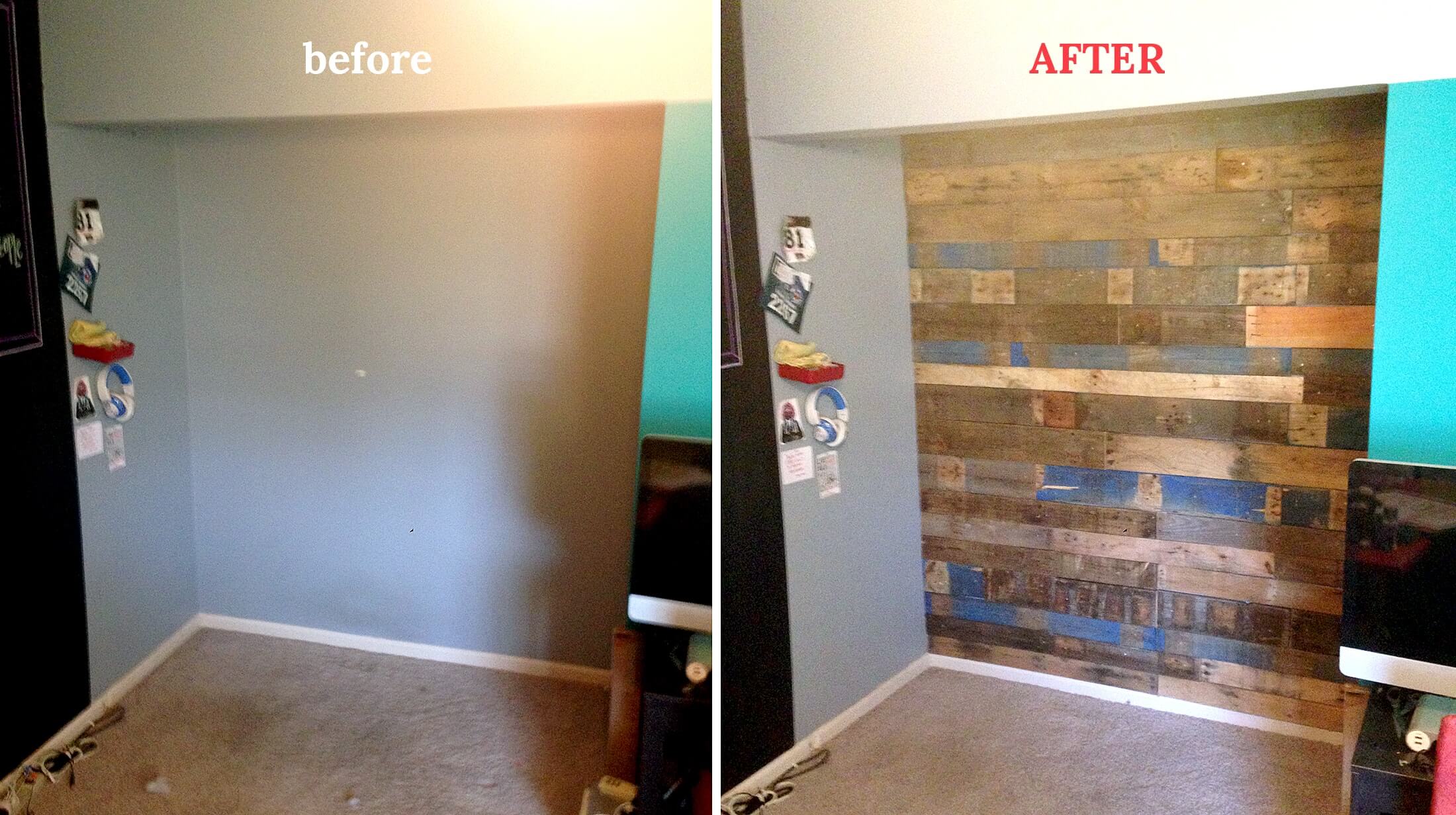
(sorry for the crappy quality photo, twas the iPhone 4 days!)
A fresh coat of paint makes a world of difference!
My wife also got a bit tired of the random color scheme we had in our office (notice the black wall, green wall, and gray wall in the photo above). We spent one weekend repainting our entire office white with one bright yellow accent wall. I give my wife all the credit in the world for her design-eye. I can only take credit for the stuff that needed hammering, cutting, and installing – hah.
Related note: A fresh coat of paint on your website goes a long way too. Read about the redesign of JasonDoesStuff.
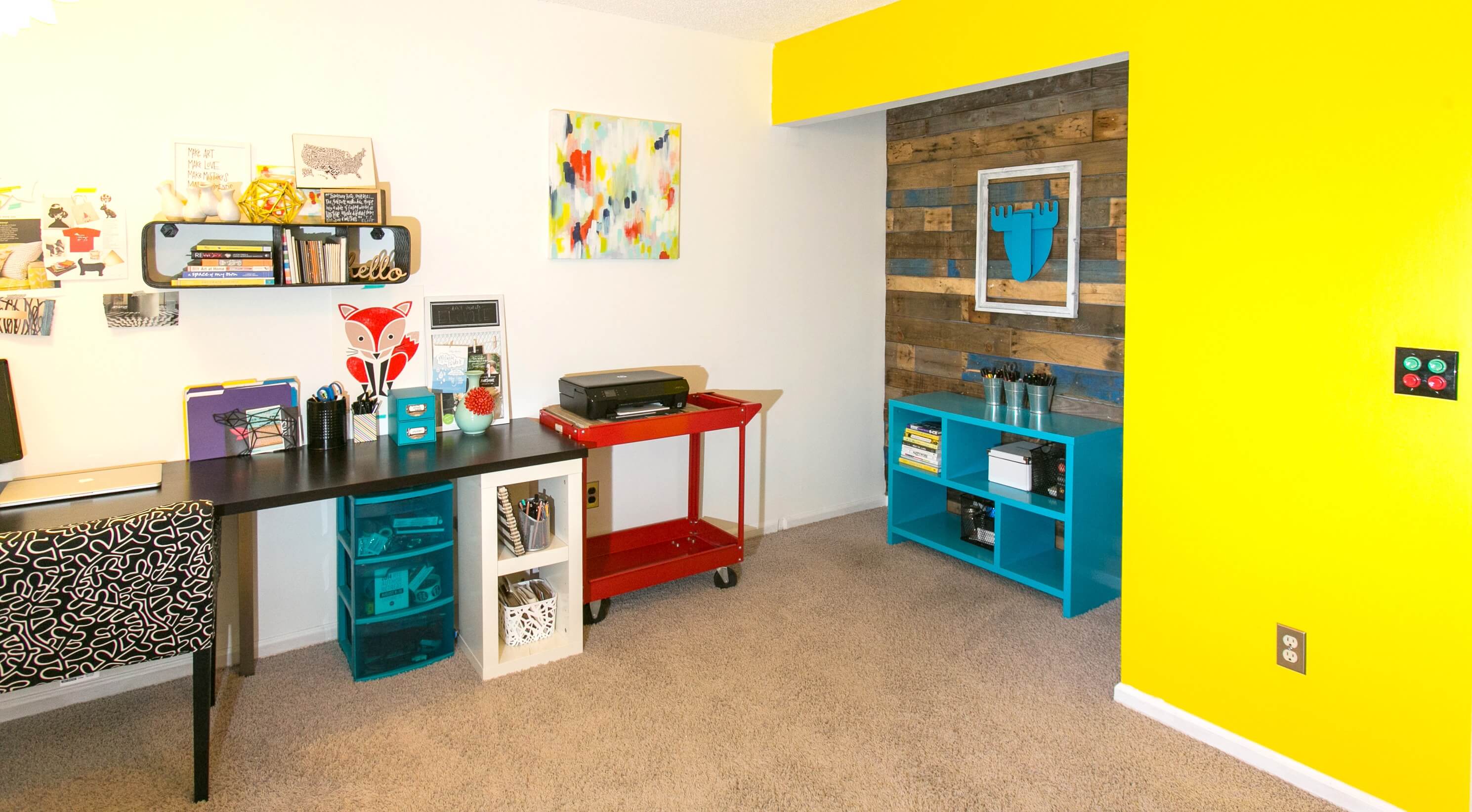
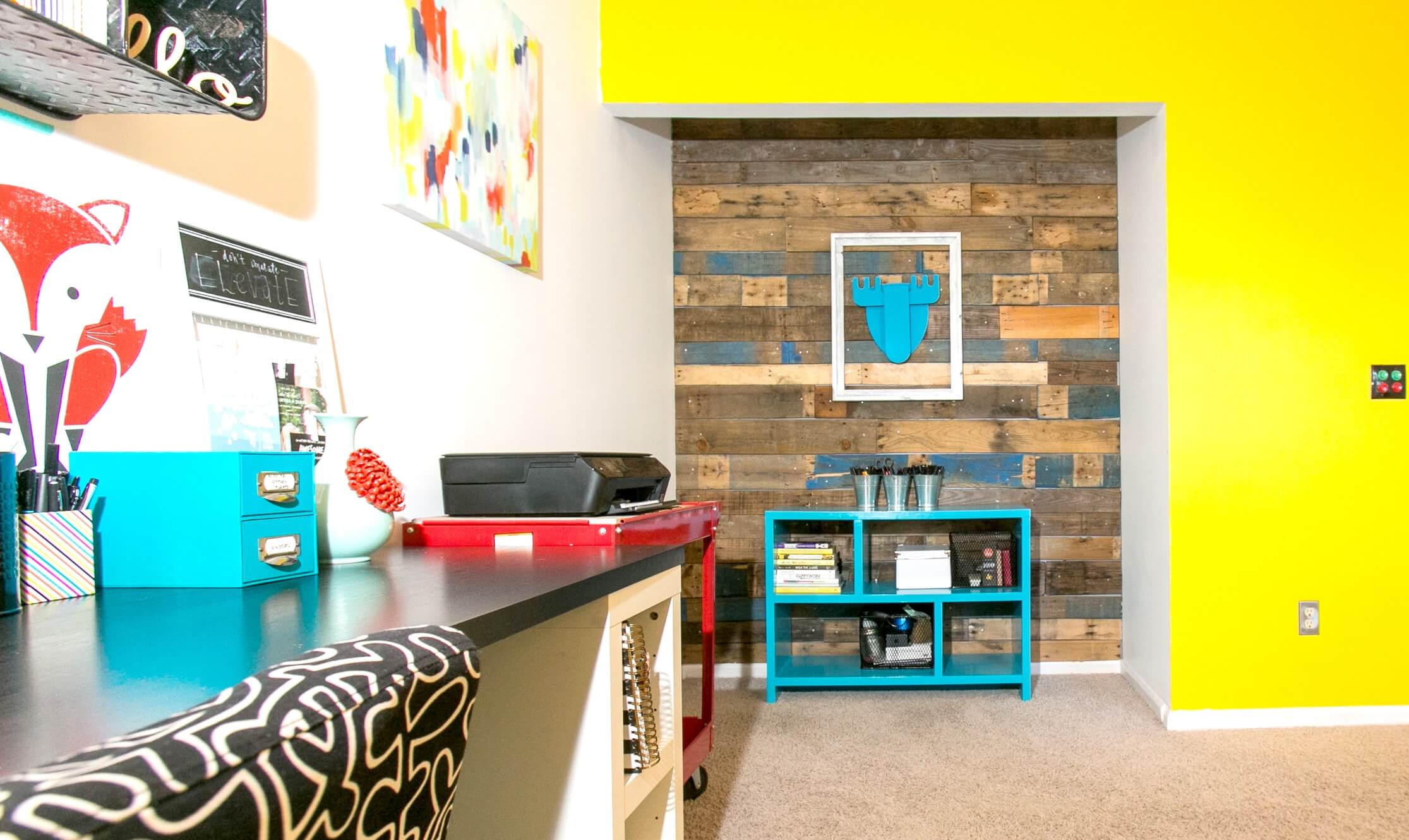
My reclaimed pallet wood wall was just the beginning. I craved completing more projects with my hands.
The photos below show you a few other projects I got inspired to do. Part of that inspiration came from the giant pile of wood planks that were taking up room in our garage.
Funny enough, during this reclaimed wood phase, I wrote my first book in two weeks. I had so much motivation and inspiration from completing all my offline projects and I was able to channel that into an online project. You can grab a copy of my first book, Creativity For Sale, on Amazon if you like.
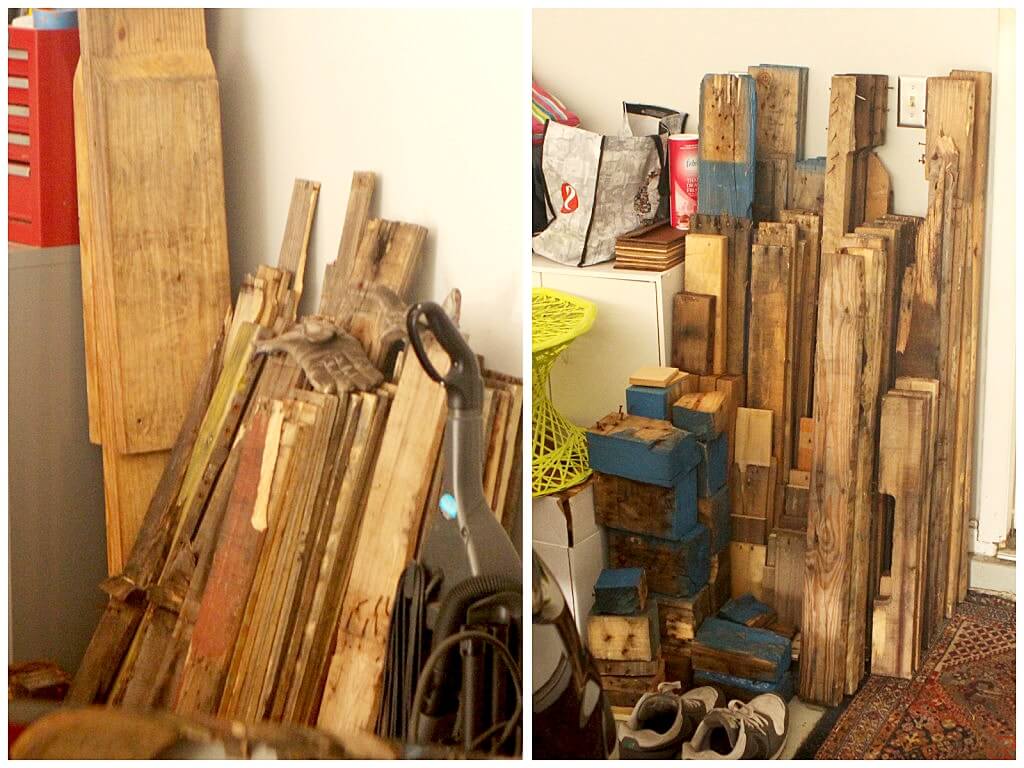
(I don’t know how I lived with this clutter in our garage, haha)
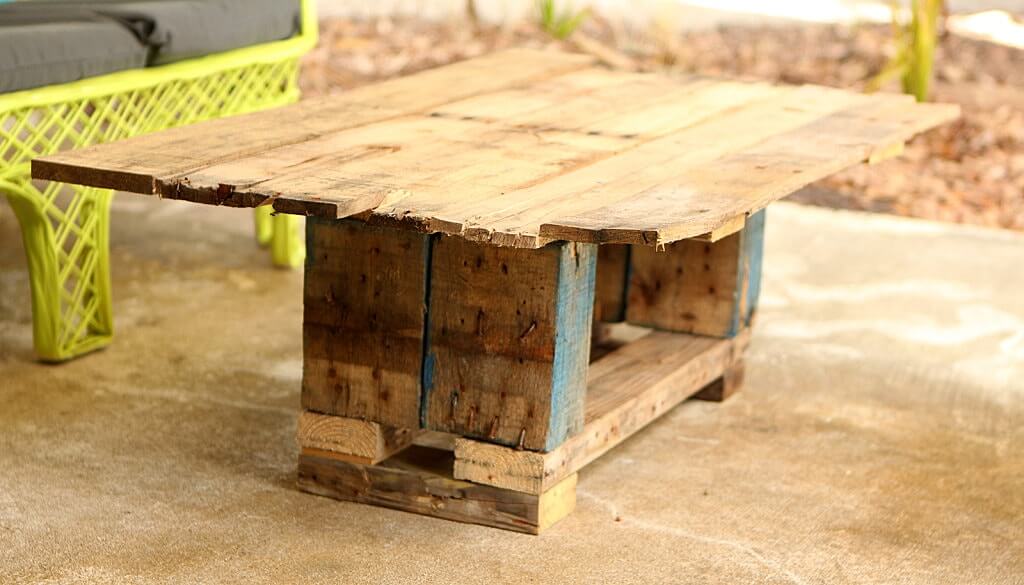
(A super simple outdoor table I whipped together from scraps)
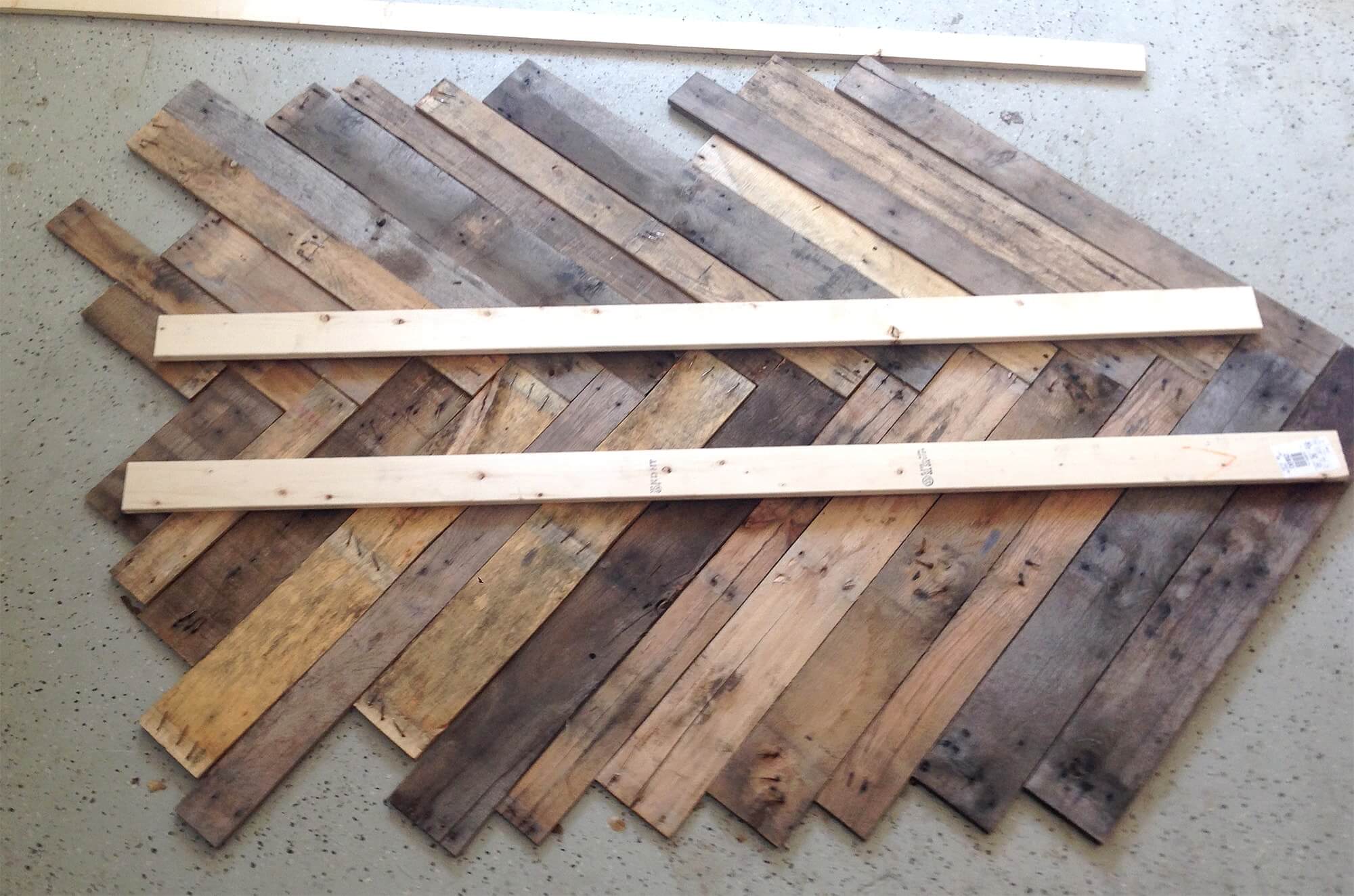
(The start of an art piece I built for our living room)

(The finished pallet wood art piece! I also built the coffee table from a plank of cedar and piping from Home Depot. On the outdoor patio you can see the outdoor table. Decoration choices by my wife – obviously.)
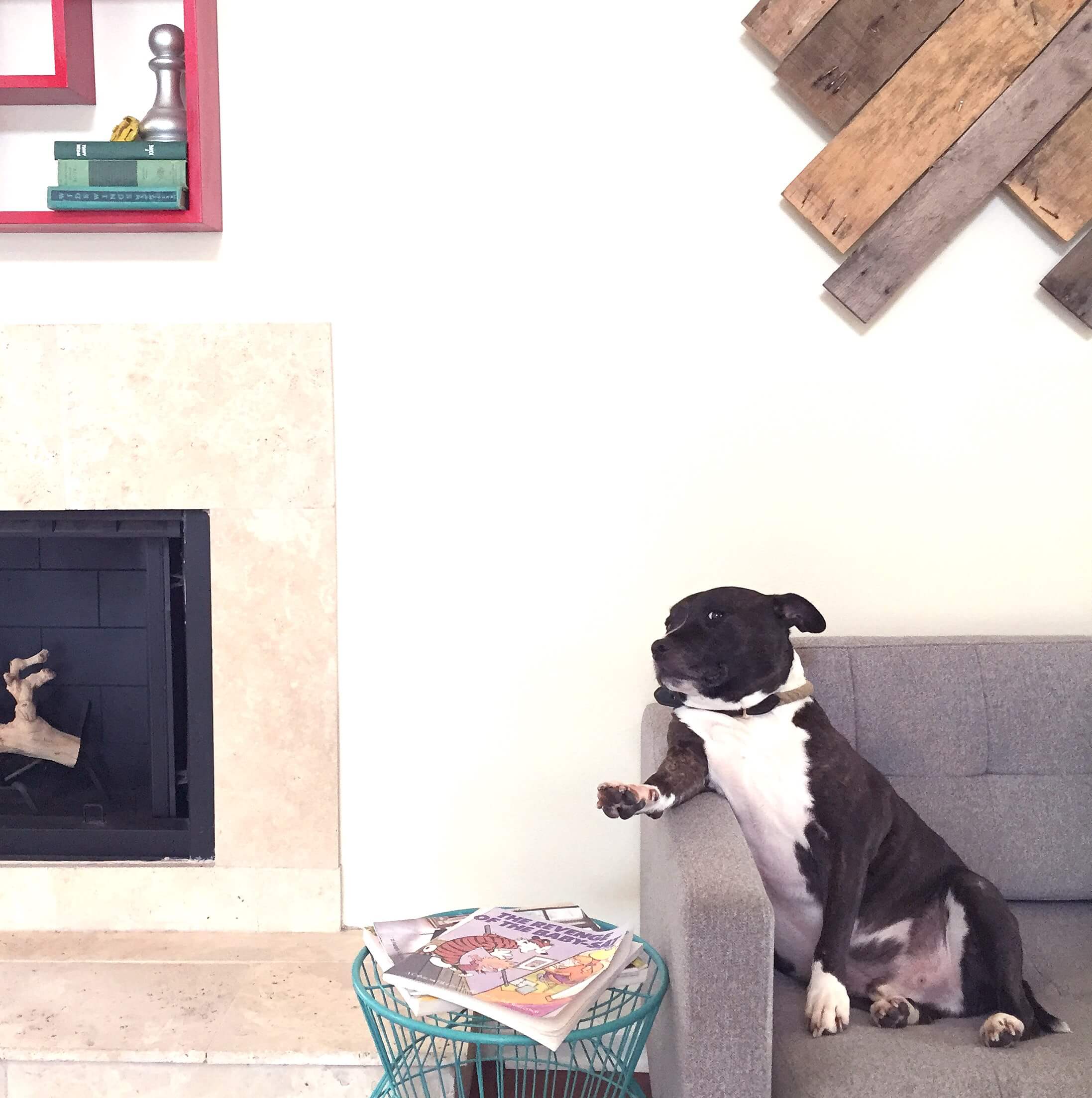
(Our dog Plaxico, doing what he does.)

(There were no shortage of trips to fill CLIFFRD with pallets!)
Working with my hands helped inspire me in business
The more I do projects with my hands, disconnecting from the online word, the more I feel inspired to create in all areas.
Often, the time we spend online doesn’t feel like things are getting completed. You write tweets, you read tweets, that’s it. You scroll through your Facebook News Feed, you like photos of babies, you share a witty status or funny photo, and you move on. You read emails, you send emails, you get more emails. It’s a never-ending cycle without completion.
Offline projects have a start and finish. You set an initial goal. You do the work. The project gets completed. Yay!
It’s a really empowering feeling to complete projects. It’s helped me transition the same thought process into work I’m doing online. If I’m writing a blog post or article, I try to stay in the moment as long as possible and finish the post.
There are so many distractions online. We constantly feel like we’re being pulled in a million directions. Yet, when you’re building something with your hands, you’re in the moment of each specific task (mostly because you could lose a finger, whack yourself with a hammer, or get splinters in your toes – wear shoes!).
Building things with reclaimed wood was a nice escape from refreshing every feed or inbox on my iPhone/laptop. It also helped me get better at focusing on singular tasks.
The power of completion has been hugely helpful for me and I encourage you to try it. Get out there and build something with your hands!







